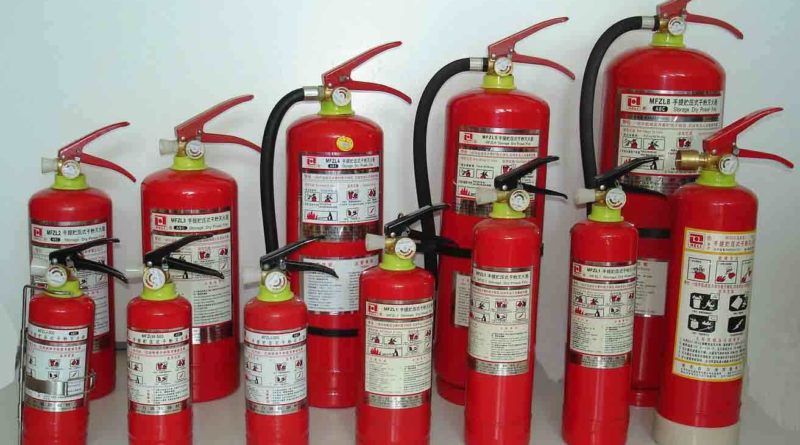It’s nice to finally be home”, how many times have we said this upon coming back home from a long busy day or an eventful journey. A home is a safe place and we take it for granted most of the time. However, our houses are safe only when we make them so. A reckless household is a fertile ground for various threats. From cutlery left within a child’s reach to imprudent use of house electronics – such carelessness may result in injuries, electrocution or even a raging fire inside your home.
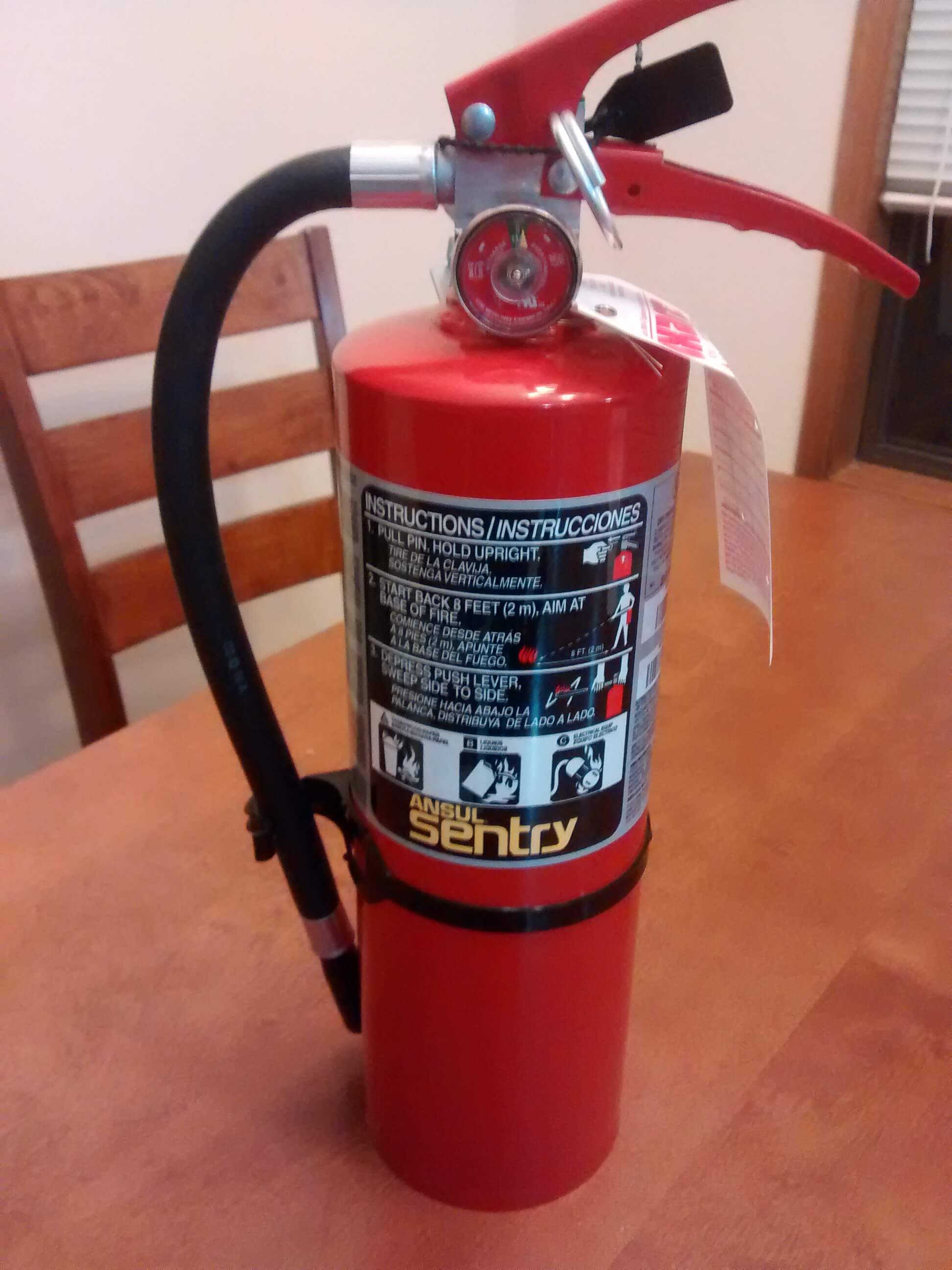
source: hackaday.com
While a fire indoors can be the source of comfort, coziness and warm delicious food it is also an unpredictable element that can cause a catastrophe. According to the report of the United States Fire Statistics in 2018, approx. 7500 fires that happened in American households resulted in injuries. The vast majority of these casualties happened due to cooking, carelessness took second place. These statistics show that even if you are a careful and wise person no one is protected from a casualty of a domestic fire. That is why one of the essentials of fire safety at home is having a fire extinguisher. A reliable fire extinguisher is the weapon of first and rapid response to the ignition. However, you need to be sure that your fire extinguisher is ready to serve its purpose when you need it. Otherwise, what you may end up with is not just money or property loss but also a threat to your family’s health and safety. Therefore, it is crucial to inspect your home fire extinguisher occasionally and here we will provide you with a list of proper instructions for a home inspection. Home Fire Extinguisher Inspection Procedure
According to Florida state law, any fire extinguisher requires inspection at least once a year. Such a crucial procedure might help you identify flaws that may lower the fire extinguisher’s functionality and, therefore, compromise your ability to fight a fire. Here is All Florida Fire Equipment memo of steps you should take into account while performing check-ups of your home fire extinguishers.
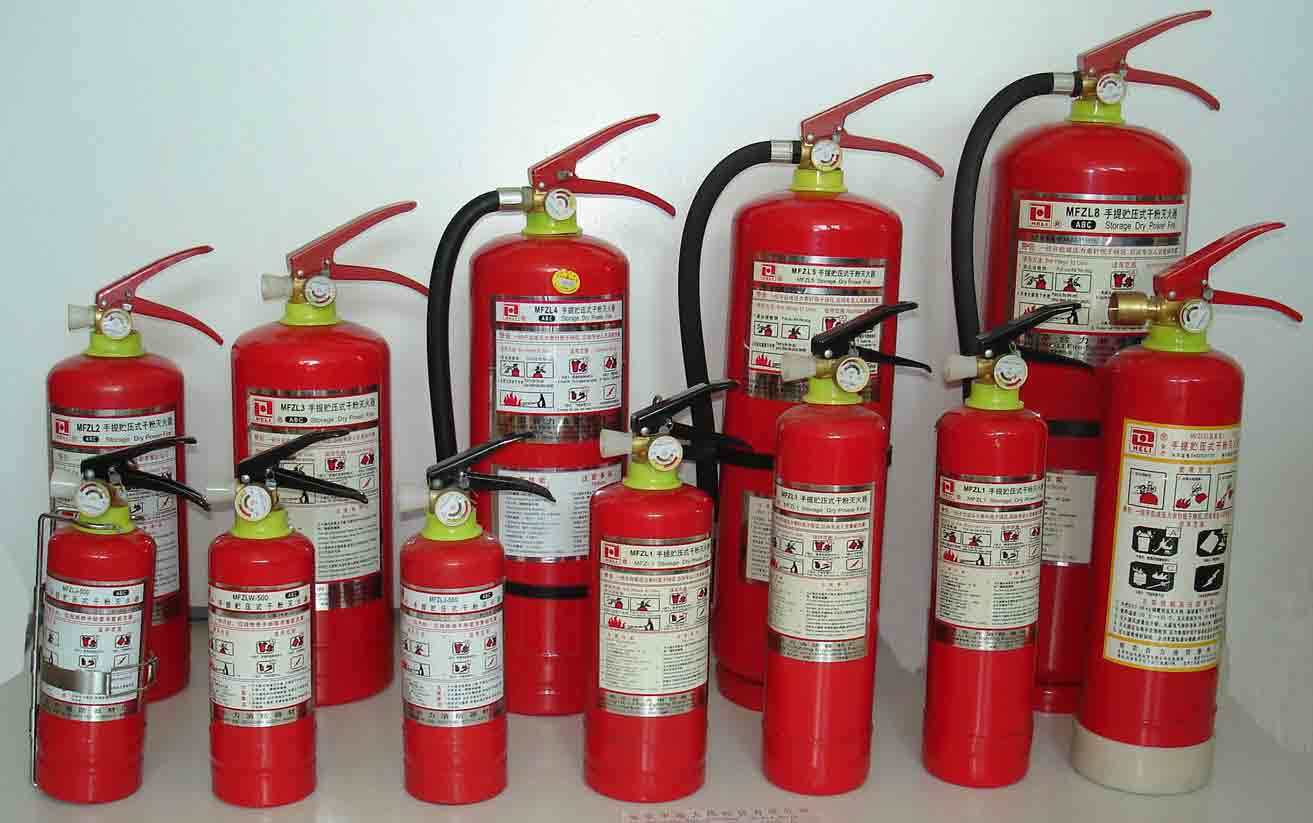
source: made-in-china.com
1.Check The Safety Pin Of Your Home Fire Extinguisher
Every fire extinguisher has a built-in safety pin that serves to prevent accidental dispensing of an extinguishing agent. It is always located near the top of a fire extinguisher on the discharge handle. When this pin is in place you can safely perform any actions with a fire extinguisher such as inspection or hauling when you redecorate or move homes.
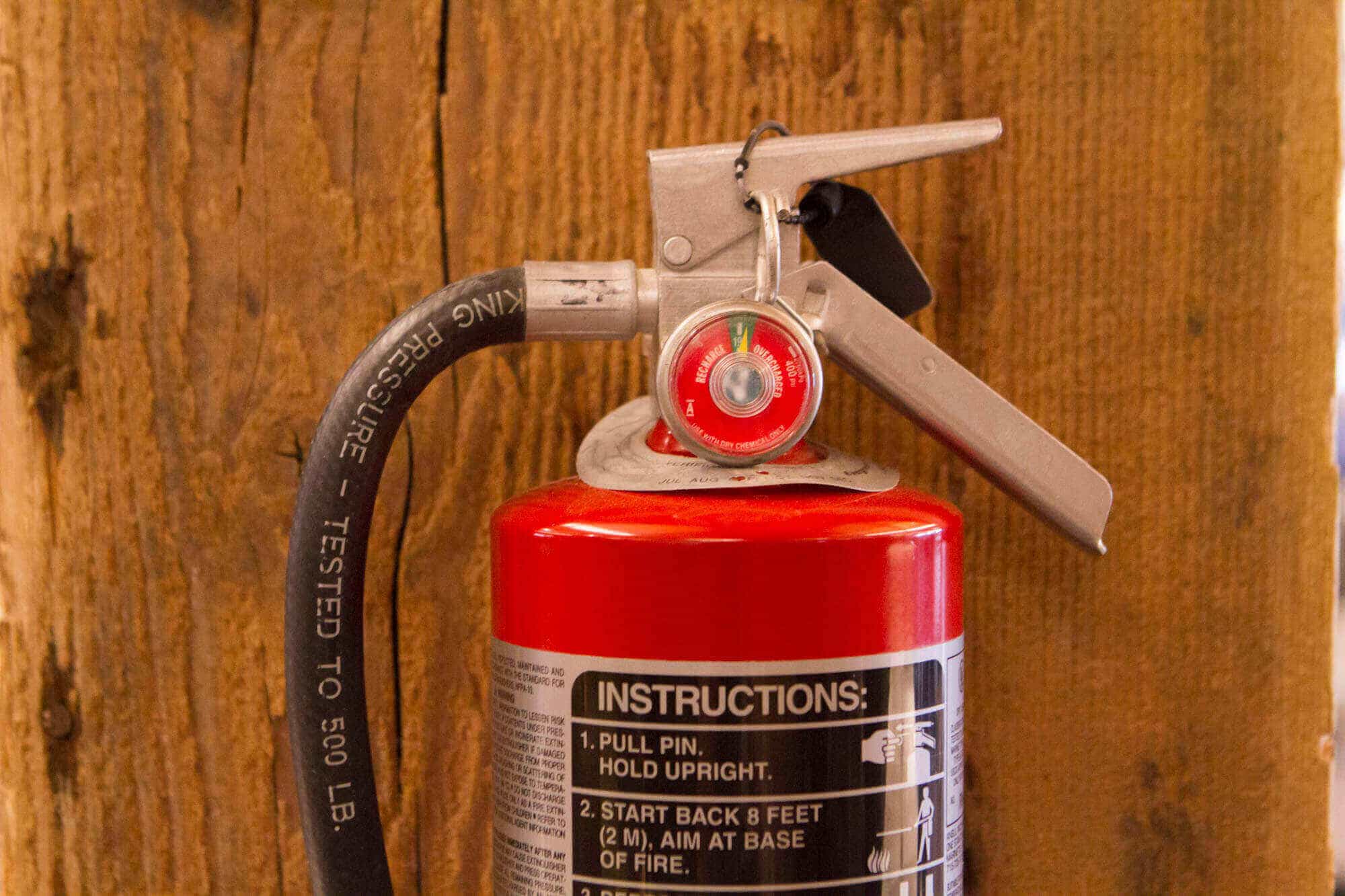
source: porch.com
2.Inspect The External Parts Of A Home Fire Extinguisher
The best place to store a fire extinguisher is where you can easily reach it. However, that means that it may also be exposed to unintended physical damage. While the majority of fire extinguishers are made from a hard metal it doesn’t protect fire extinguishers from minor damage, such as scratches and dents. Thus, your first step while inspecting a home fire extinguisher should be taking a close look at its exterior. Make sure that your fire extinguisher doesn’t show any signs of physical breaches because even the smallest scratch can start corrosion. And what follows is usually that the fire fighting tools lose their efficiency. Besides, check the fire extinguisher’s hose and nozzle for any damage such as cracks or holes. Any cavity in the dispensing part of the fire extinguisher might lead to a drop in its discharging pressure.
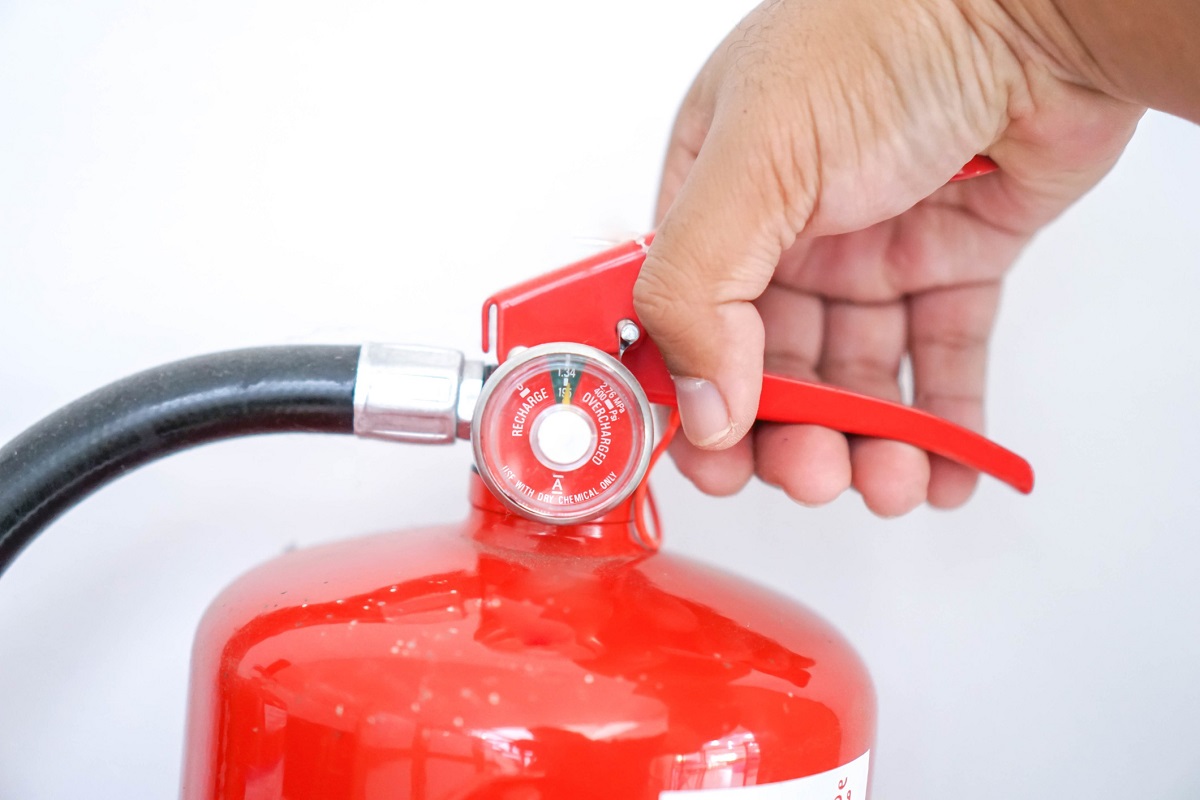
source: Allstate.com
3.Check Pressure Levels Of A Home Fire Extinguisher
The core discharging feature in fire extinguishers is compressed gas. Depending on the fire extinguisher, different gasses or pressurized air are used for this reason. Some extinguishers have a special compartment for this gas and some other ones contain it all in a single section. Pressure levels determine such firefighting abilities of fire extinguishers as the quantity of the extinguishing agent and how far they can dispense it. Besides, a proper pressure level is also crucial for your safety during the firefight since you have to maintain a big enough distance from the blazes and also some extinguishing agents might be toxic in large volumes. Therefore, you should carefully check the level of pressure inside your home fire extinguisher to ensure its highest performance.
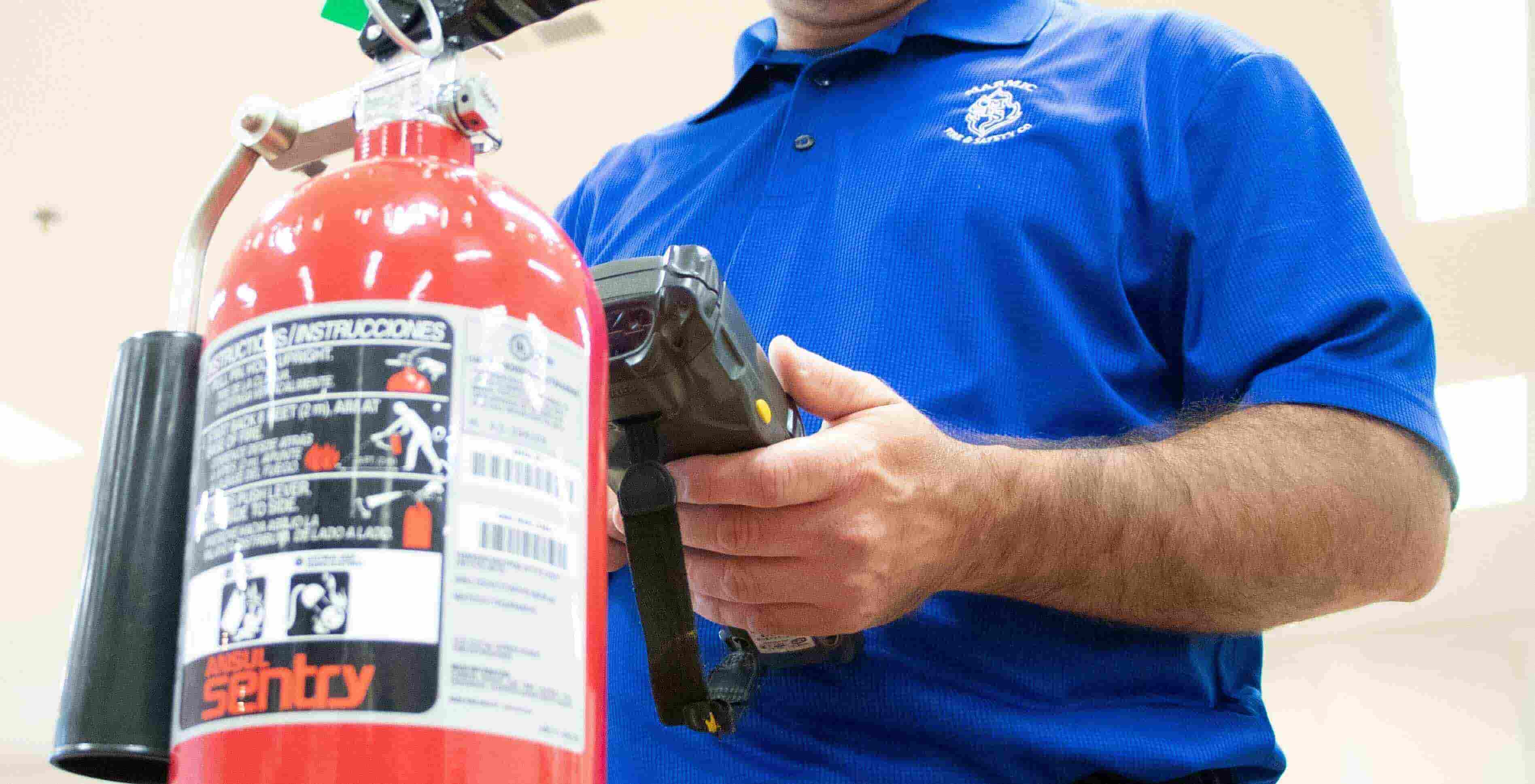
source: marmicfire.com
4.Inspect Service Tag Of Your Home Fire Extinguisher
With most fire extinguishers, there should be an info tag over its neck or attached somewhere on its body. It is a service tag that contains the information about the last time your home fire extinguisher had routine maintenance. Some other crucial pieces of information there are the name of the person who examined the extinguisher and the date; it also might include some notes about the condition of your fire-fighting tool. You should update these notes with information from your personal check-ups. Besides, such information might come in very handy when you buy a used fire extinguisher since it will tell how the previous owner handled the tool.
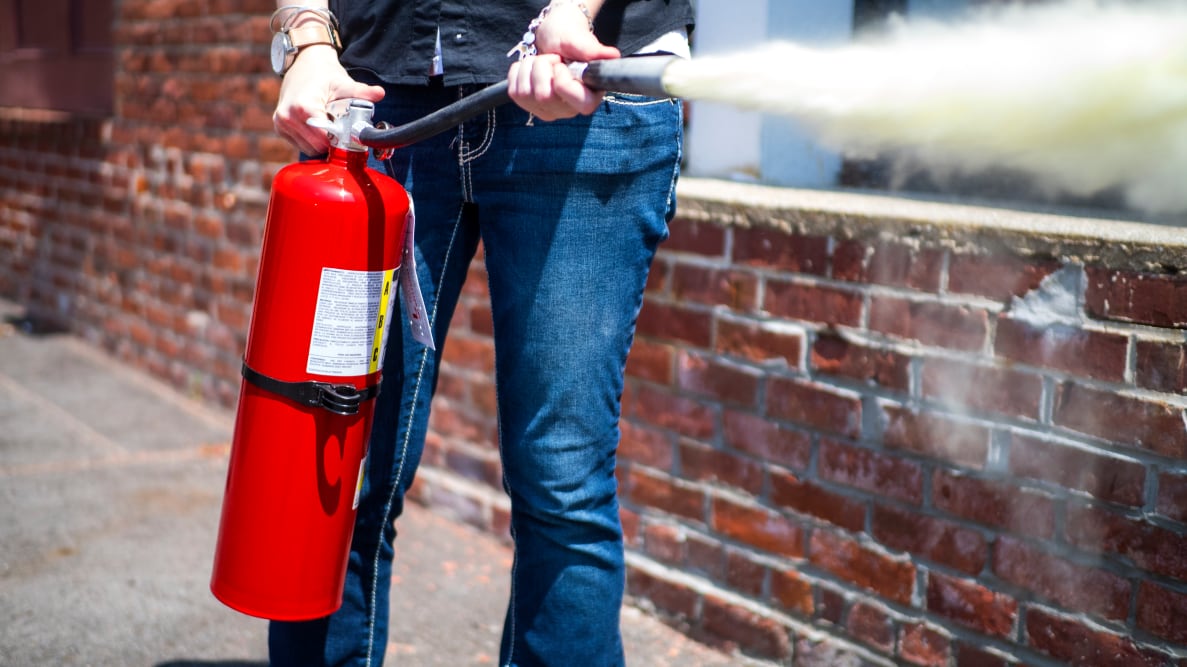
source: cloudinary.com
Did Your Home Fire Extinguishers Expire?
There are different types of fire extinguishers to fight different types of the blaze. The National Agency of Fire Prevention determines the following classes of fire extinguishers – A, B, C, D, and K. For the majority of fires in American households, the nature of ignitions can be classified as A, B, or C class fires. This includes ignition of wood, paper, clothes or malfunctioning electronics. For these classes of fire extinguishers, depending on the extinguishing agent, mandatory maintenance should be performed every 1, 3 or 5 years. A service tag on such a firefighting tool should include the date of the last check-up. If you notice that your home fire extinguisher is due for an inspection, it’s time to call a specialist for service maintenance. such as dry chemical powder fire extinguishers” after the sentence “There are different types of fire extinguishers to fight different types of the blaze
Yet, every fire extinguisher has an expiration date and you should replace it when the time comes. The expiration date is often stated on the haul of the fire extinguisher or on its servicing tag. An expired fire extinguisher won’t serve its purpose since some parts of it start to decay and rust. Other parts might lose their ability to hold pressure which may turn the lifesaving tool into a dangerous object.
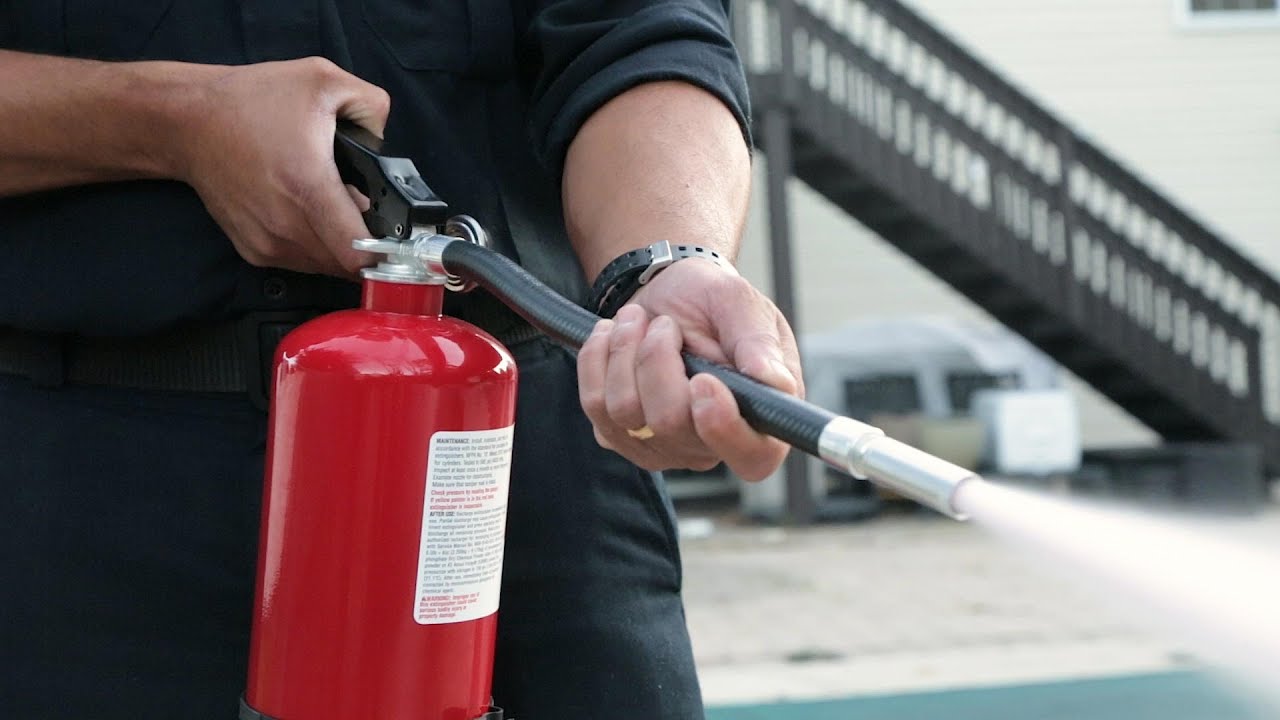
source: ghscanner.com
Call Specialists For Home Fire Extinguisher Maintenance
Routine check-ups of your home fire extinguisher will help your fire safety stay on the highest level. However, if you spot any serious damage or flaw in the work of your fire extinguisher it is time to invite specialists. A skilled specialist will perform service maintenance of your extinguisher in accordance with law regulations and fire safety standards. This way you can be sure that your fire extinguisher has your back and will come to the rescue when you need it. Fire extinguisher maintenance workers will also help you discard your expired firefighting tool in a safe and nature-friendly way. see more ideas for what do you need to know about home fire extinguisher at Live Enhanced.

